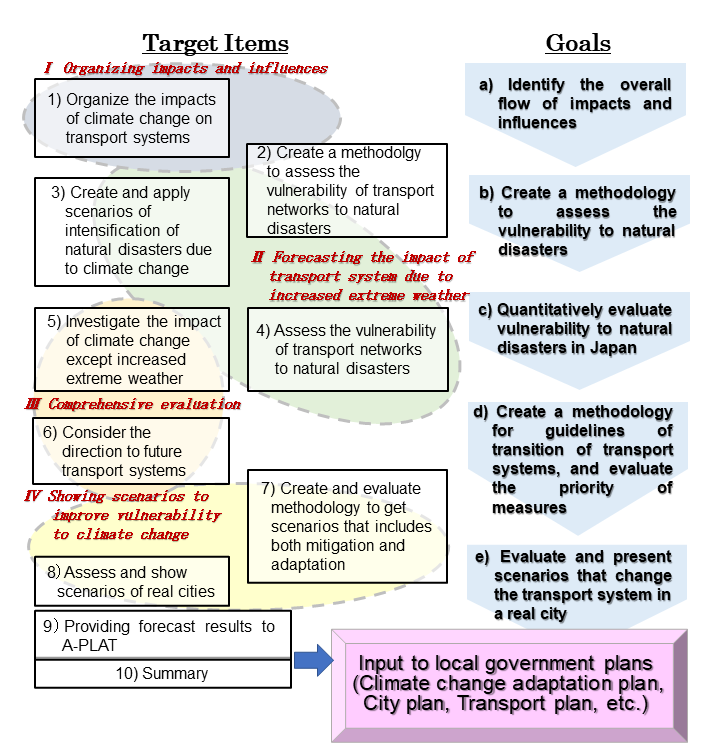Sub-theme leader
Hirokazu Kato (Nagoya University)
Outline
This research aims to forecast the impacts of climate change on transport systems in Japan and clarify the required measures. It is apparent that the biggest impact is the increasing occurrence of extreme weather. As a result, rising temperatures have changed transport demand, and rising sea levels are concerning in terms of strengthening the roads and railways against their consequences. This research will organize these impact factors and estimate the changes in the vulnerability of each area or each road/railway section. Using the estimation results, a method will be created to prioritize measures, considering the importance of each district and road/railway section, and the priority will be evaluated. The case study with a high-priority district indicates specific measures that consider low-carbon transport systems.

Goals
- Demonstrate the overall flow of the impacts of climate change on transport systems and its socio-economic spillover in Japan.
- Assess the vulnerability of transport networks to natural disasters, create a method for forecasting changes in vulnerability due to climate change, and calculate the priority of implementing measures.
- Make a trial calculation by creating a method for examining guidelines for switching to a transportation system that can balance low carbon and the adaptation to climate change in large, medium, and small-sized cities.
Target items
- Prepare a list of the possible impacts of variability on transport systems, and organize the overall flow of socio-economic impacts based on the IPCC report and reviews of previous research.
- Create a methodology for estimating the major impacts of variability on transport systems, and estimate the impact of each district, road/railway section, and transport bases (garages, train stations, bus terminals, and airports) in Japan.
- By superimposing data on the risk of floods and landslides and data on transport networks, high-risk road/railway sections and districts will be extracted, and the increased risk of traffic obstacles due to the increasing occurrence of extreme weather will be estimated. In addition, this research will quantify the importance of high-risk road/railway sections and calculate the priority of countermeasures by combining importance and risk.
- Based on the above results, the research will rank, for the entire country, which road/railway sections, districts, and transport bases should be prioritized, and select one large, one medium, and one small-sized city from the districts with the highest priority. In these case studies, we will estimate the impact of climate change on transport systems. In addition, the deterioration in the event of a disaster evaluation (QoL model), which has already been constructed, will be applied to assess QoL deterioration due to accessibility decline and distribution disruption. Furthermore, we will evaluate the impacts of other climate variabilities and demonstrate measures to improve the transport network.
Adaptation options
- Maintenance of detours for railways and roads and improvement/replacement of structures such as bridges
- Relocation of base facilities such as railway stations, train garages, bus terminals, and bus garages
- Soft measures such as formulating a vehicle evacuation plan in the event of flood damage
